If Spanish isn’t your first language – and you love coffee – then this is the guide you’re looking for. You’ll learn 13 ways to order coffee in Spanish. Plus popular coffee drinks, common expressions and required coffee vocabulary.
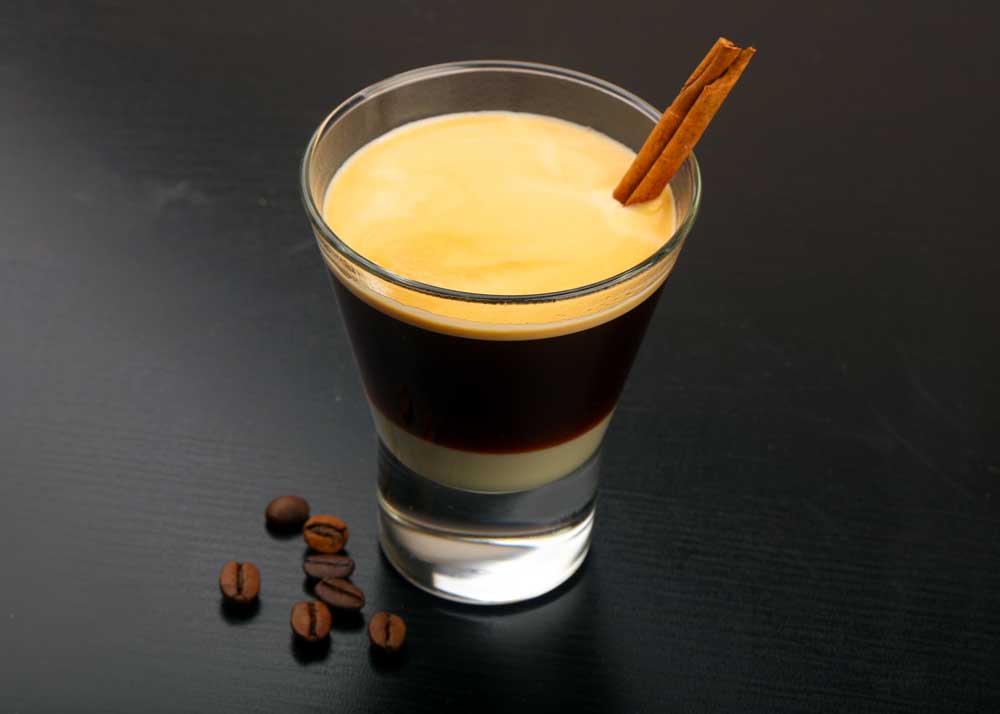
Something I’ve learned from my time in South America is how to order a coffee. I’ve ordered hundreds of cups of coffee at cafes and restaurants in Ecuador, the Galapagos, and Venezuela, and even a few on Calle Ocho in Miami’s Little Havana.
In this post, I’ll share with you what I’ve learned – so you can comfortably order a great cup of coffee.
“Can I have a coffee please?” in Spanish
This is the simplest way to order a coffee in Spanish.
- Un café, por favor. (Neutral – neither formal nor informal) In English, this is: “A coffee, please”.
- ¿Me das un café, por favor? (informal)
- ¿Me da un café, por favor? (formal)
Something to know about Spanish is that there are two ways to say most things: formal and informal. While you can get away with informal in most settings, you won’t go wrong with the formal expression. I have included both in most of these expressions.
Spanish word for coffee
The word for coffee in Spanish is café. It is pronounced as (kah-feh).
Coffee in Spanish is el café (m).
How to say coffee in Spanish
Coffee in Spanish is café and it is pronounced as (kah-feh).
Something else to know about Spanish is that the nouns have gender – either masculine or feminine.
In the case of coffee, it is a masculine noun. This means that cafe uses the masculine article “el”. In contrast, leche (milk) is feminine so it uses the feminine article “la”.
So here’s how it looks:
- The coffee = el café
- The milk = la leche
How to spell coffee in Spanish
Coffee is spelled the same ways as we spell cafe – another word for a coffee shop: c-a-f-é
But as you have probably noticed, the Spanish word café has an accent over the “e”. This accent (é) is called an acute accent. It is used to indicate word stress, that is, which syllable to emphasize when speaking. Here’s more about Spanish accent marks.
What is coffee shop in Spanish?
To keep things simple, the word for coffee shop and coffee is the same: café. Also, the same word is also used for the color brown.
Here are the three meanings of the Spanish word “café”
- Coffee drink: café
- Coffee shop: café
- Color brown: café
So, just to keep things clear, here’s how these all come together:
“Tomé un café en la café de color café del centro.” (In English: I drank a coffee in the brown coffee shop downtown.)
So, how do you say cafe (coffee shop) in Spanish? The same way as you say coffee: café.
“Would you like coffee?” in Spanish
- ¿Quieres una taza de café? (informal)
- ¿Quiere una taza de café? (formal)
“More coffee” in Spanish
- Más café. (More coffee)
- Más café, por favor. (More coffee, please)
- Necesito más café. (I need more coffee)
Who doesn’t, right? This is helpful when asking your waiter to refill your mug.
Years ago, my daughter bought me a mug while we living in Ecuador. It traveled back to Canada with us. And it says “I need coffee” in Spanish (Necesito café).
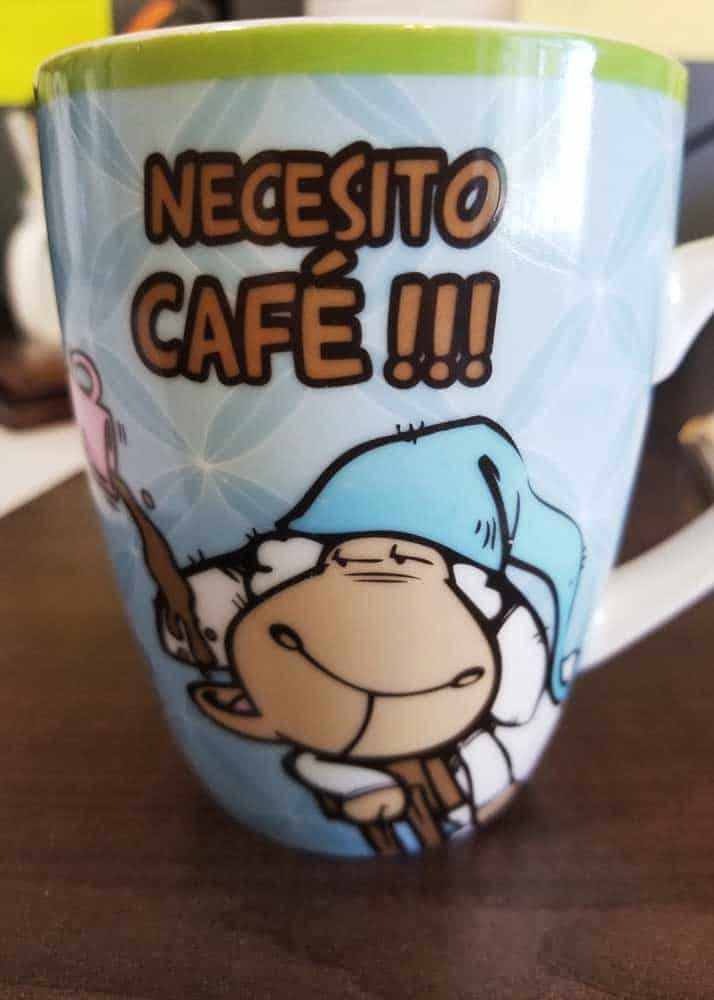
How to Place Your Coffee Order
Here is how a typical conversation might play out.
- ¿Qué vas a tomar? (Barista)
- Un momento, por favor. (Just a minute, please) You, if you need more time.
- Estoy viendo. Estoy decidiendo. (I’m looking. I’m deciding)
- Voy a querer un… (I would like to order…) Just insert the name of the drink you would like.
Common Spanish Names for Coffees
Here is a brief summary of some common coffee drinks. For more detail, see the section at the end of the post.
- Café solo / Espresso: Café solo is basically an espresso shot. It literally means “just coffee”. It comes black and strong. There won’t be any milk or sweetener added.
- Café Americano: This is basically a watered-down espresso. But don’t be deterred. A well-made Americano can be very satisfying. This is the closest you might find to a coffee from the United States or Canada. Here’s how it compares: Americano vs Brewed Coffee.
- Café con Leche: Also known as latte / lechero.
I recommend starting with the basics. Try ordering a simple drink above. As you get more comfortable, maybe expand to try ordering some of the fancier drinks listed below.
How Spanish Coffee Shops Work
Depending on where you are visiting, you might order a coffee drink that comes premixed with milk and sugar. But in other areas, you’ll get a black coffee and then mix it yourself.
Before ordering, just stand back for a minute and watch how the process works. Is there a separate station for customers to add milk and sweeteners? Or does the barista make a complete coffee for each guest?
Not only does this vary between countries, but it can also vary with cafes across the street from each other.
If you need to clarify the mix, here are the basics for milk and sweeteners.
Milk in Coffee
Here are the Spanish expressions with English equivalents.
- ¿Con leche? With milk? (Barista)
- Si, con un poco de leche = Yes, with a little milk. (You)
- No, sin leche = No, without milk. (You)
There are a few types of milk that might be available, especially in the larger centers.
- leche de vaca (cows milk)
- leche de almendra (almond milk)
- leche de soya (soy milk)
- leche de coco (coconut milk)
Sugar in Coffee
- ¿Con azucar? With sugar?
- Si, con un poco de azucar. = Yes, with a little sugar.
- No, sin leche. = No, without milk.
Ice and Alcohol in Coffee
- Con hielo. With ice
- Con alcohol (ron, whisky, brandy). With alcohol (rum, whiskey, brandy)
“To drink coffee” in Spanish
There are two verbs to say “to drink”: beber and tomar.
- tomar (toh-MAHR): to take, to consume. It can also mean, to take, to have, to get.
- beber (beh-BEHR): to take, to drink.
The verb you’ll use depends on where in the world you are. To some Spanish speakers, these verbs are used interchangeably. Other areas use only one or the other.
- Tomar café: to drink coffee. In a sentence: Me gusta tomar café. (In English: I like to drink coffee.)
- Beber café: to drink coffee. In a sentence, although less common: Me gusta beber café. (In English: I like to drink coffee.)
From my experience, tomar café is commonly used in Latin America – at least commonly understood. Beber café might be more commonly used in Spain.
“Coffee with milk” in Spanish
Café con leche: This is as simple as it sounds. Your coffee comes mixed with steamed milk.
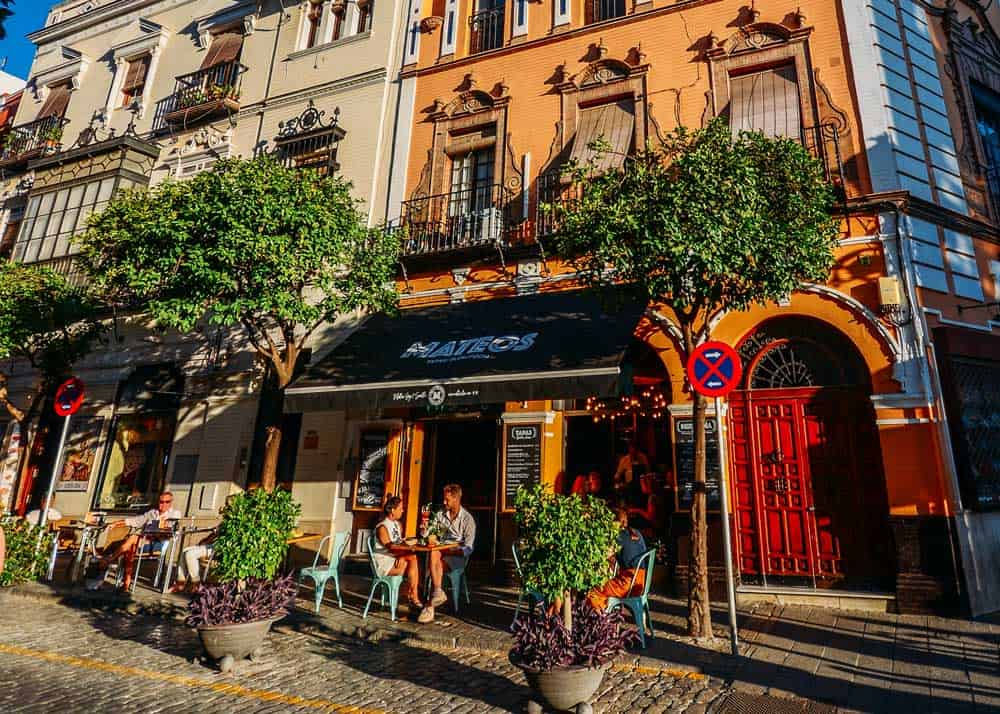
Ordering Coffee in Spain
What is in Spanish coffee? As the following list details, the drinks are fairly basic. They all include an espresso shot. Some other ingredients include milk (steamed or sweetened condensed), honey, spices, ice, or alcohol.
13 Spanish Coffee Drinks
Here is a full list of the types of coffee you can try in Spain. They range from no milk to a more milk than coffee. The English translation is noted in brackets for each type of Spanish coffee.
- Café Con Leche: (Coffee with milk) Served with equal parts espresso and milk. You might be given the option of hot, cold, or lukewarm milk. Because the milk is steamed first, ordering hot milk will be faster because it won’t need to cool before they can serve it with your coffee.
- Café Americano: (American coffee) Rich flavor but more water than an espresso. Basically, it is an espresso that has been watered down to be the same strength as a regular “American” coffee.
- Café Solo: (Just coffee) This is an espresso shot. Served black and strong.
- Descafeinado: (Decaf) Decaf coffee just hasn’t really caught on in the Spanish-speaking world, at least not as it has in the United States or Canada. Even in the English-speaking world, decaf is the focus of many coffee jokes.
- Café Cortado: (Cut coffee) The Spanish word cortado means “cut”. It refers to espresso with a touch of steamed milk. It is also known as espresso macchiato (or caffè macchiato in Italy). Sometimes called manchado.
- Café con Hielo: (Coffee with ice) Popular type of coffee on hot, summer days. Basically the Spanish version of iced coffee. It is served as a hot cup of coffee with another cup of ice cubes.
- Leche Manchada: (Stained milk) This is the opposite of cortado – and consists of warm milk “stained” with a touch of coffee. This is a popular option in the afternoons/evenings when someone might not want a full-strength coffee.
- Café Bombón: (Sweet coffee) This is an espresso shot with condensed milk. The ratio is 50/50 of coffee and sweetened condensed milk. And these two ingredients remain as separate layers until you mix them to blend the flavors. These sweet coffee drinks come from the Canary Islands. Also known as cafe canario. There is a version with liquor known as barraquito.
- Carajillo: (Coffee with a splash of liquor) This is a standard espresso shot with a dash of alcohol. It might include rum, brandy, or whiskey. But no milk in this coffee drink. The province of Castellón has a local variation of this drink. Carajillo de Castellón is similar but also features sugar, lemon rind, coffee beans, and sometimes cinnamon sticks.
- Café Belmonte: (Coffee with condensed milk and brandy) This drink is a mix of café bombón and carajillo. Take an espresso shot, add sweetened condensed milk, and a splay of brandy. Originally from Murcia, Spain. A variation is Trifásico or tricolor that comes from the Catalonia region of Spain.
- Blanco y Negro: (White and Black) Espresso mixed with ice. Topped with ice cream or leche merengada (milkshake).
- Café del Tiempo: (Weather Coffee) This is an iced coffee similar to café con hielo. But it may also be mixed in any number of variations above. Basically, any of the above Spanish coffees can become café del tiempo by adding ice. This makes any of these drinks perfect for the heat of the summer. Temperature is not cold – just room temperature.
- Café con Miel: (Coffee with honey) This is one of my favorite ways to drink coffee – with honey. This drink consists of an espresso shot, honey (miel), and steamed milk. Honey is used as a replacement for sugar. Other spices (like cinnamon, vanilla, ginger, or cardamom) may also be added. Read more about putting honey in coffee.
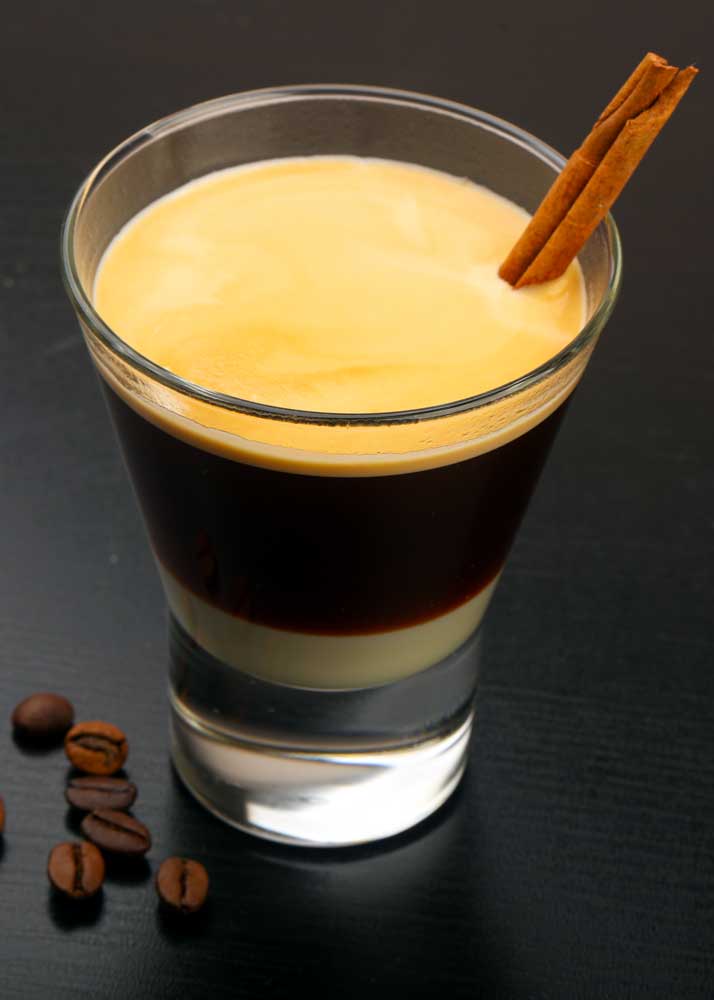
A note about café manchado. Literally, this means stained coffee. The meaning will change depending on where you’re visiting.
If in doubt, ask about the ratio. Or be adventurous and order it everywhere you go and see what you’ll get.
- Sometimes this refers to cortado (espresso macchiato) which is coffee-stained with milk.
- Other times this refers to leche manchada, which is milk stained with coffee – the opposite mixture.
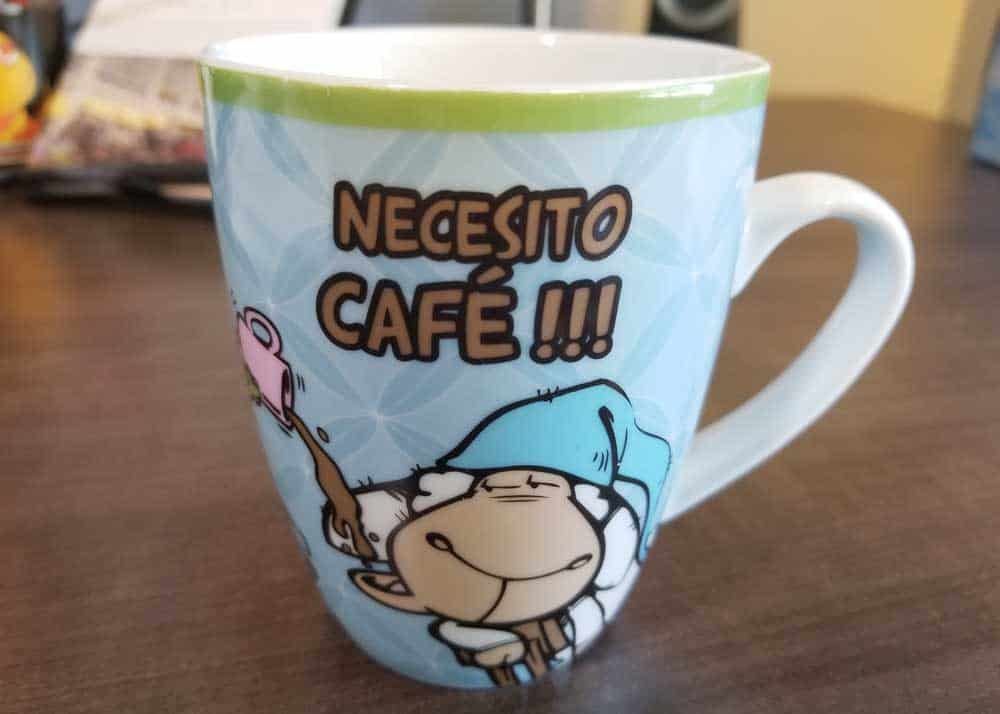
Vocabulary for Ordering Coffee in Spanish
- Para llevar: to take away
- Taza: mug with a handle
- Caliente: hot
- Demasiado caliente: too hot
- Templado / Tibio: lukewarm
- Fría: cold
- Azúcar: sugar
- Hielo: Ice
- Sacarina: sweetener
- Leche: Milk
- Canela: Cinnamon
Learn how to order a coffee in Spanish (Video)
Prefer watching and listening? Here’s a great summary to help with pronunciation and vocabulary.
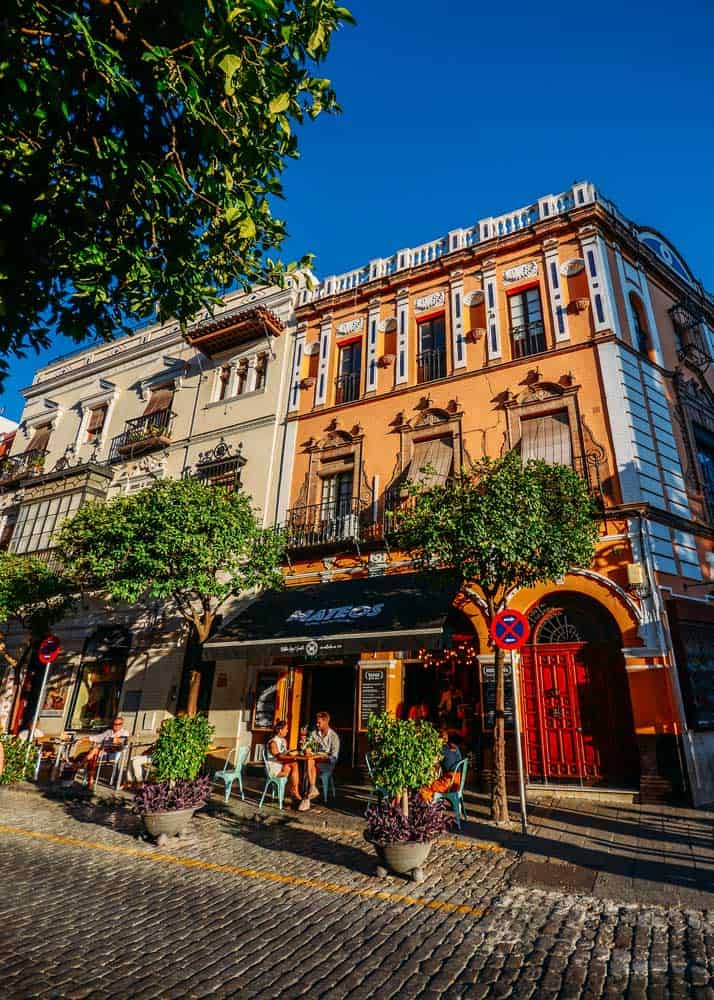
More reading: 79 Types of Coffee (Definitive Guide)
Your Turn
How did you make out? Did I miss something? Let me know in the comments!
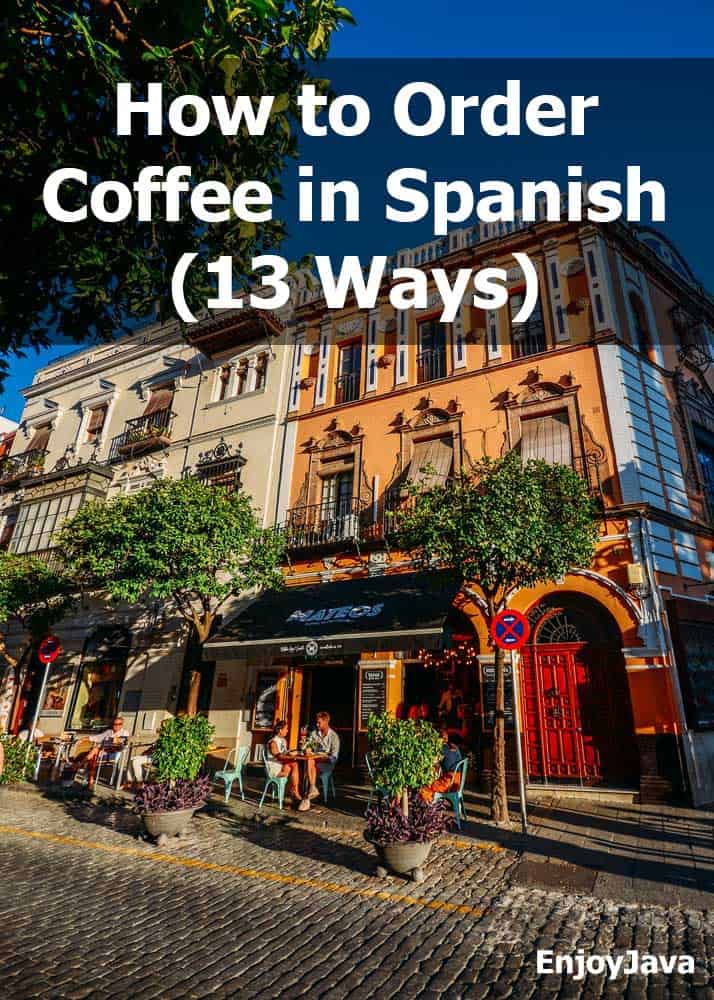
Planning on doing more travel? Here’s how to order coffee in French.
- About the Author
- Latest Posts
Bryan Haines is a co-founder and writer on EnjoyJava – and is working to make it the best coffee blog in the world.
He is a travel blogger at Storyteller Travel and blogs about photography at Storyteller Tech. He is also co-founder of Storyteller Media, a company he started with his wife, Dena.
café
Gender
The gender of café is masculine. E.g. el café.
Plural
The plural of café is cafés.
Spanish Definition
| coffee | |
| 1. n. Bebida hecha a base de granos de café. | |
| 2. n. : I need to have ‘coffee’ before I can function in the morning → Necesito tomar café para poder funcionar por la mañana. |
Translations for coffee and their definitions
| café |  |
|
| 1. adj. brown | ||
| 2. n. coffee | ||
| 3. n. cafe, coffee shop |
| cafeto | |
| 1. n. coffee plant, coffee tree |
Pronunciation
Mexican Dialect
café
Dictionary
More Spanish words for Groceries
All vocabulary sets
Random Quiz:
¿Cuál es la palabra para fifteen?
Start learning Spanish vocabulary
That coffee on the table is for you.
El café que está sobre la mesa es para ti.
Don’t take coffee or sodas because caffeine causes jet lag.
No tomes café ni refrescos porque la cafeína causa jet lag.
Please bring me the bill (check) with my coffee.
Por favor tráigame la cuenta con el café.
I invite you to a coffee. (I will buy you a coffee.)
Te invito a un café.
Marta asked for coffee.
Marta pidió café. -café
Guatemala produces the most delicious coffee in the world.
Guatemala produce el café más exquisito del mundo.
No thanks. I’m just going to take a cup of coffee.
No gracias. Voy a tomar una taza de café nomás.
I brought you coffee from Colombia.
Te traje café de Colombia.
I’m dying to drink a cup of coffee.
Yo estoy muriendo por beber una taza de café.
I will have a coffee without sugar.
Tomaré un café sin azúcar.
They are serving the coffee.
Ellas están sirviendo el café.
Do you serve desserts and coffee?
¿Sirven ustedes postres y café?
We don’t drink coffee.
No tomamos café.
You drink coffee every morning.
Ud. bebe café todas las mañanas.
They finish drinking coffee.
Ellos terminan de beber café.
Let’s drink coffee.
Bebamos café.
Let’s not drink coffee.
No bebamos café.
Let’s drink coffee
Vamos a beber café.
We are going to drink coffee.
Vamos a beber café.
We are not going to drink coffee.
No vamos a beber café.
That coffee was so bitter!
¡El café estaba muy amargo!
I agree with what has been said about the price of coffee.
Estoy de acuerdo sobre lo que se ha afirmado respecto del precio del café.
In fact the problem is not just coffee.
De hecho, el problema no es solo el café.
You could survive on planting coffee.
Se podía sobrevivir plantando café.
Wake up and smell the coffee!
¡Despertemos y gocemos con el aroma del café!
Will Irish coffee be banned?
¿Se prohibirá el café irlandés?
Cocoa, chocolate, coffee and chicory
Cacao, chocolate, café y achicoria
Not to mention alcohol or coffee?
Por no mencionar ya la de las bebidas alcohólicas o el café.
We have to be able to drink tea and coffee there.
Efectivamente, allí se va a tomar café y té.
The fall in coffee prices is indeed catastrophic.
La caída del precio del café es en efecto catastrófica.
This is not the same as selling a coffee machine; this is about a medical intervention.
No es lo mismo que vender una cafetera; se trata de una intervención médica.
Europe was born in the coffee houses of Europe.
Europa nació en los cafés de Europa.
They know how to produce coffee; as I said, they have been doing it for generations.
Saben cómo producir café; como he señalado, llevan generaciones haciéndolo.
If that is not the case, then we should not be required to sit here drinking coffee for an hour.
Ahora bien, si no hay nada que hablar me parece inútil que perdamos una hora tomando café.
In Uganda, for instance, the coffee growers are suffering enormously.
En Uganda, por ejemplo, los agricultores dedicados al cultivo del café están sufriendo enormemente.
The example of the coffee crisis, however, demonstrates that this is not enough.
Sin embargo, el ejemplo de la crisis del café demuestra que esto no basta.
While I was daydreaming about this over a coffee this morning, I spilt my drink on my trousers.
Mientras estaba soñando despierto con esto y bebiéndome un café esta mañana, se me cayó el café en los pantalones.
In the ICO, this initiative is greatly supported by the coffee producing countries.
En la OIC, esta iniciativa cuenta con el apoyo entusiasta de los países productores de café.
We should therefore not look at coffee as a stand-alone issue.
Por tanto, no deberíamos considerar la cuestión del café como algo aislado.
The coffee bush cannot at present be used for animal feed.
La planta del café no puede utilizarse actualmente como alimento para animales.
Twenty-seven ACP countries are dependent on coffee.
Veintisiete países ACP dependen del café.
Furthermore, as the coffee is being produced at too high a yield, its very quality is declining.
Además, puesto que el café se produce con un rendimiento demasiado elevado, la propia calidad está disminuyendo.
In the case of coffee, this advantage is favourable climatic conditions.
En el caso del café, esta ventaja son las condiciones climáticas favorables.
We account for almost half of all the world’s coffee imports.
Adquirimos prácticamente la mitad de las importaciones de café de todo el mundo.
In which of this Parliament’s bars and restaurants is fairly traded coffee served?
¿En qué bar o restaurante de este Parlamento se sirve café comercializado de forma justa?
They are coffee, butter, rice, pasta and drinking milk.
Son el café, la mantequilla, el arroz, la pasta y la leche de consumo.
The fact is, the idea of Europe originated in the coffee houses.
El hecho es que la idea de Europa se originó en los cafés.
The individual consumer looks at one packet of coffee, rightly.
El consumidor particular mira un paquete de café, como corresponde.
In the afternoon over coffee, the financial transaction tax was buried.
Por la tarde, a la hora del café, el impuesto sobre las transacciones financieras estaba enterrado.
Wake up and smell the coffee, Europe, before we have food riots on our streets!
¡Abre los ojos y haz algo al respecto, Europa, antes de que se produzcan disturbios a causa de los alimentos en nuestras calles!
And a coffee break does seem like a good idea.
Un café entre medias es también algo agradable.
All the country has is coffee, and that does not get you very far on the world market.
El país sólo tiene café y así no se va muy lejos en el mercado mundial.
It is therefore not unusual for us to be discussing coffee at this time.
Por esta razón, no nos resulta inusual discutir sobre café a esta hora.
For many people it is less than the cost of a cup of coffee or a newspaper.
Para muchas personas, es menos que el costo de una taza de café o de un periódico.
We are supporting the ICO coffee resolution 407 and requested the European Coffee Federation to conduct independent monitoring.
Apoyamos la resolución 407 de la OIC y hemos pedido a la Federación Europea del Café que lleve a cabo una supervisión independiente.
Through dialogue with the big coffee producers and retailers, it should also be possible to ensure that better wagers are paid to the indigent coffee planters.
A través del diálogo con los grandes productores y distribuidores de café, también debería resultar posible asegurar que se pagan mejores salarios a los plantadores de café indigentes.
Ten years ago coffee-producing countries received around one-third of every dollar spent on coffee.
Hace diez años, los países productores de café recibían alrededor de un tercio de cada dólar que se gastaba en café.
As a result of the absence of an international system to stabilise coffee prices and prices of raw materials in general, the situation of coffee farmers is not viable.
Como consecuencia de la ausencia de un sistema internacional para estabilizar los precios del café y de las materias primas en general, la situación de los agricultores del café no es viable.
At a meeting in the European Parliament to debate the coffee crisis, Louis Belinda from Uganda gave the following answer. ‘We have no alternative to coffee growing,’ he said.
En una reunión en el Parlamento Europeo para debatir la crisis del café, Louis Belinda de Uganda daba la siguiente respuesta: «No tenemos alternativa al cultivo de café.
The Commission also needs to give greater support to fair-traded coffee and better access for such coffee to EU markets.
Asimismo, la Comisión debe prestar un mayor apoyo al café comercializado de forma justa y facilitar su acceso a los mercados comunitarios.
Amendment 15 refers to liquid coffee and tea in tins, while the French refers to liquid coffee and drinks based on tea in tins.
En la enmienda 15 leemos café y té líquidos enlatados, mientras que en la francesa se lee café líquido y bebidas a base de té enlatadas.
Having a cup of coffee with a friend or shopping for food involves mortal danger.
Tomar una taza de café con un amigo o hacer la compra puede ser muy peligroso.
Côte d’Ivoire is the world’s largest producer of cocoa and one of the most important producers of coffee.
Côte d’Ivoire es el mayor productor de cacao del mundo y uno de los más importantes productores de café.
One hundred and fifty Ugandan shillings are what a grower gets for a kilo of the coffee he grows.
Estos agricultores cobran ciento cincuenta chelines ugandeses por cada kilo de café que cultivan.
We have made contact with the main coffee merchants and we are in contact with a number of distributors.
Hemos entablado contacto con los principales comerciantes de café y estamos en contacto con diversos distribuidores.
The next item is the Commission statement on the crisis on the international coffee market.
. El siguiente punto es la declaración de la Comisión sobre la crisis del mercado internacional del café.
Most coffee-dependent countries are least developed countries or part of the ACP group.
La mayoría de los países dependientes del café están entre los países menos desarrollados o forman parte del grupo ACP.
Just as he says, the price of coffee has fallen dramatically in recent years.
Tal y como él sostiene, el precio del café ha descendido enormemente en los últimos años.
An ordinary coffee planter in Tanzania or Kenya earns at best a few euros per week.
Un agricultor corriente dedicado a cultivar café en Tanzania o Kenia gana en el mejor de los casos unos pocos euros a la semana.
What is interesting, however, is that it is possible to cultivate excellent, nutritious mushrooms from the remnants of the coffee bush.
Resulta interesante, no obstante, que sea posible cultivar excelentes y nutritivos hongos a partir de los restos de la planta del café.
[ view all sentence pairs ]
Home
About
Blog
Contact Us
Log In
Sign Up
Follow Us
Our Apps
Home>Words that start with C>coffee>English to Spanish translation
How to Say Coffee in SpanishAdvertisement
Categories:
Food and Eating
If you want to know how to say coffee in Spanish, you will find the translation here. We hope this will help you to understand Spanish better.
Here is the translation and the Spanish word for coffee:
café
Edit
Coffee in all languages
Dictionary Entries near coffee
- coevolve
- coexist
- coexistence
- coffee
- coffee bar
- coffee grounds
- coffee ice cream
Cite this Entry
«Coffee in Spanish.» In Different Languages, https://www.indifferentlanguages.com/words/coffee/spanish. Accessed 14 Apr 2023.
Copy
Copied
Check out other translations to the Spanish language:
- cobnut
- greengrocery
- inedible
- orange juice
- port
- sparkling wine
- sugar
- tinned
- tomato soup
- turtle
Browse Words Alphabetically

What is the Spanish American word for coffee shop?
“Café” as a coffeehouse has obviously been adopted to the English language, and probably the Spanish language as well. But “cafetería” is the more traditional Spanish term for coffeehouse.
What are cafes called in Spain?
Cafetería
What do you call a coffee shop?
A coffeehouse, coffee shop, or café is an establishment that primarily serves coffee (of various types, e.g. espresso, latte, cappuccino). Some coffeehouses may serve cold drinks such as iced coffee and iced tea; in continental Europe, cafés serve alcoholic drinks.
Is it El or LA Cafe?
The Spanish noun café (pronounced: kah-FEH), which means ‘coffee,’ is masculine, so it must be used with the masculine articles el (‘the’) or u…
Is Banana masculine or feminine?
The gender of banane is feminine. E.g. la banane.
What is mango called in Spanish?
Translation of mango in Spanish
| English | Spanish |
|---|---|
| the mango | el mango |
Is Apple in French feminine or masculine?
Answer and Explanation: The word fruit in French is a masculine noun, and uses masculine articles with it. For example, the sentence ‘An apple is a fruit’ is Une pomme est un…
Is Apple feminine or masculine in Spanish?
Fruit, trees, and gender
| Feminine fruit | Masculine tree |
|---|---|
| banana | banano |
| manzana ‘apple’ | manzano |
| cereza ‘cherry’ | cerezo |
| pera ‘pear’ | peral |
What does feminine mean?
(Entry 1 of 2) 1 : female sense 1a(1) 2 : characteristic of or appropriate or unique to women feminine beauty a feminine perspective. 3 : of, relating to, or constituting the gender that ordinarily includes most words or grammatical forms referring to females a feminine noun.
Is Apple male or female?
As the bee visits different flowers it becomes coated with pollen, which gets transferred to other flowers on other trees. Although the apple blossom has both male and female parts (the apple tree is a hermaphrodite), it is self-incompatible. Apple trees require cross-pollination (Browning 1998, p. 19).
Why is Carne feminine in Spanish?
Why is meat “la carne” and not “el carne”? Because it is a feminine noun. Remember when a noun starts with a vowel like a it uses el even if it is feminine like el agua but las aguas negras.
Is El Agua masculine or feminine?
Agua is feminine, however, because of this pronunciation issue with the two vowels side-by-side, it’s actually ‘el agua’. Since it is truly feminine, the phrase ‘el agua pura’ is correct. Pura needs to be in the feminine form because agua is feminine, but you’ll use to masculine article el to break the double vowels.
Is tomato masculine or feminine?
COUNTABLE: one tomato, two tomatoes, tomatoes = une tomate, deux tomates, des tomates UNCOUNTABLE: some meat, a piece of meat, a portion of meat = de la viande, un morceau de viande, une portion de viande. Thanks! How can I know when to use “le” or “la”? “le” is for masculine words and “la” for feminine.
How do you say tomato in Mexico?
10 Answers Jitomate is synonymous with what we know as a tomato today, though it is a regional word most commonly used in southern mexico.
Is Concombre masculine or feminine?
Concombre, masculine noun (un concombre, le concombre, des concombres) = cucumber (pronounced cawn-cawm-b-re, you only hear the n and the m minimally, in fact the two syllables are pronounced virtually identically, the stress is very slightly on the second syllable).
Is Oignon masculine or feminine?
“Un oignon” is masculine.
Is Sucre masculine or feminine?
Sucre is a feminine word in French.
Is Fromage masculine or feminine?
Answer and Explanation: The word for cheese is a masculine noun: le fromage. Because fromage is masculine, masculine articles must be used with it, and here, it is used with…
Is mayonnaise masculine or feminine?
mayonnaise
| English | French |
|---|---|
| mayonnaise | mayonnaise (feminine noun) |
Is Pomme masculine or feminine?
From Old French pomme, pome, pume, from Latin pōma, plural of pōmum, reanalyzed as a feminine singular.
What does Pomme stand for?
Potsdam Magnetic Model of the Earth
What is pomme?
Pomme or pommes may refer to: Apple in French. Pomme, a green (vert) roundel in heraldry. Pomme de terre, Potato in French. Pommes fondant, Fondant potatoes.
What gender is Apple in German?
masculine
What gender is die?
feminine

